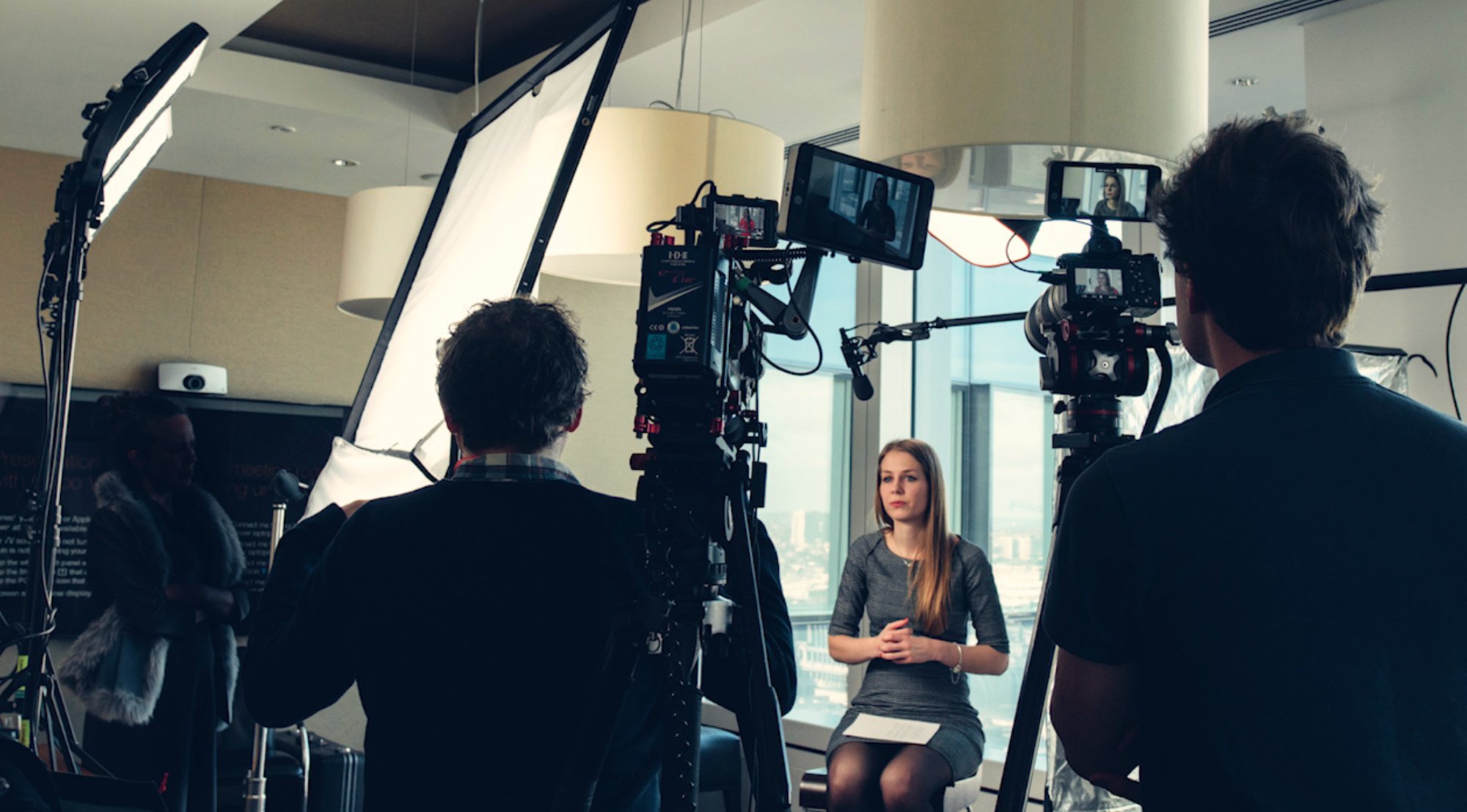Have you ever looked at a brilliantly animated 3D character or scene and thought, "How did they do that?!" Well, behind the scenes is a 3D animation studio with a team of creative and skilled people hard at work. 3D animation is incredibly complex, requiring time, effort, and inspiration to produce high-quality moving images. With specialized software integrations, modern animators create mesmerizing, immersive art. Whether it's used for storytelling, visualizing data, or simply creating beautiful works of art, animation in 3D is a fantastic tool with endless possibilities.
From inspiration to immersive experience, this blog post will take you on an educational journey that celebrates the power and potential of 3D animation.
What exactly is 3D animation?
Animation works by displaying a series of still images in rapid sequence. Each image changes slightly from the last, creating the perception of movement. 3D, or Three-Dimensional animation, takes that process a bit further. The beauty of 3D animation is that characters and objects appear in three dimensions, much like we see them in the real world.
There are many different types of three-dimensional animation. Some types, like Stop Motion and Claymation, were the foundation for this high-tech animation. These were made using hand-crafted or computer-generated objects, puppets, backgrounds, and effects.
As mentioned in our article on 2D animation, both 2D and 3D utilize many of the same skills and tools. But like live-action video production, the 3D process also considers camera blocking, lighting, and set building. For most computer-generated animation, digitally designed 3D models are manipulated or created from simple 3D shapes, then techniques like character rigging, lighting, texturing, and 3D effects are applied. Sometimes animation types like Mo-Cap (Motion Capture) help capture realistic, complex movements. Using cutting-edge 3D software, animators turn all this into moving images and sequences that transport us to a new level of storytelling.
"Animation can explain whatever the mind of man can conceive."- Walt Disney
3D animation is distinct
3D animation allows you to experience an image from unique views and angles that are impossible with live-action and 2D animation. For example, a 3D product model can display a lifelike rendering of the product from all angles and quickly cut to the internal workings of the product with scope and working detail. Unlike 2D animation, which looks flat, 3D animation utilizes graphics in the three dimensions of height, width, AND depth. Depth is what makes the difference!
The perception of depth causes a scene to appear much more vivid and realistic, with characters and objects that can be moved, rotated, and interpreted from all sides and angles. Not only does this provide the perfect opportunity for filmmakers, video game designers, product designers, and architects to express their creativity – but this technology also presents countless educational and marketing applications. 3D animation is unique, versatile, and pushes the boundaries of our imaginations. Though its beginnings were simple, the evolution of software and artistic ingenuity have turned this form of animation into a technique with virtually limitless possibilities.
The evolution of 3D animation
The development of this amazing animation style revolutionized the way we tell stories and create content. Its ability to simulate an entire three-dimensional space or atmosphere ushered in a new era of innovation, artistry, and entertainment. The origins can be traced back to the late 1800s, with Charles-Emile Reynaud's creation of the Praxinoscope. The object projected 3D-like animated images from spinning disks. Since then, 3D animation has made many leaps and bounds, some of which occurred in the not-so-distant past.
Early 1900s
- Stop-motion animation is considered a very early form of 3D animation. It involves taking a series of photographs of an object or character and then slightly altering the position of the object or character before taking the following picture. When strung together in sequence, the photographs create the illusion of movement.
- Around the same time, a unique form of stop-motion animation called Claymation is developed. Poseable characters and objects are sculpted from clay. Animators position these figures, bending an arm or turning a head, and take a photo. They repeat this pain-staking process until they have a sequence of images to string together, simulating movement.
The 60s & 70s
- After a long stall, the 1960s bring 3D animation back to life. An employee of Boeing, William Fetter, is tasked to create 3D models designed and animated via computer. He develops "Boeing Man" to simulate a human in a cock-pit. He turns these models into short animated videos to help with cock-pit design.
- The mid-1970s show off 3D computer animation to a broad audience for the first time. Fred Parke and Edwin Catmull individually design the first 3D models of a human face and hand in the early 1970s. They later collaborate on a film in 1976 called Futureworld. Shortly after, movies like Star Wars and Tron popularize its imaginative use on the big screen.
The 80s & 90s
- With computer advancements, new specialized rendering techniques, and the creation of software like AutoCad, the use of 3D animation greatly expands. The rise of computer-generated imagery (CGI) allows animators to create more realistic 3D images than ever before. Popular movies like Jurassic Park and Terminator 2 dazzle audiences with stunning 3D animated effects. The first fully 3D animated series, Veggie Tales, airs on television.
- Pixar is originally co-founded under another name by Ed Catmull, the creator of the first 3D animated hand. With the help of George Lucas and Disney, the small company makes 3D animated effects and sequences for feature films and creates short films and several famous commercials. In 1986 Steve Jobs buys the company, and Pixar is born. This team revolutionizes three-dimensional animation and goes on to produce the first fully computer-animated feature-length film, Toy Story.
Today
- Far from the days when it was only found in random short clips and sequences, 3D animation is currently used, well… just about everywhere. You see it in movies and television, video games, advertisements, virtual and augmented reality trends, and thousands of other forms of entertainment and education. In fact, it is difficult to go a single day without seeing it in some form. (And sometimes, you don’t even realize what you are seeing is 3D animation!)
- Unlike the clunky, simplistic animation of the past, current 3D computer animators make incredibly realistic, highly complex, and stunningly detailed animations that rival live-action films. Such advancements make it easier to create than ever, allowing people to build their own 3D worlds and tales with accuracy and complexity.
Tomorrow
- 3D animation has come quite a distance since its inception and it continues to evolve with new innovations. Advances in virtual reality (VR), artificial intelligence (AI), and machine learning will provide animators with new tools to create even more lifelike images and realistic user experiences.
- As technology progresses, tools will help speed up and automate the animation process, making it even more accessible and affordable.
Animation is everywhere!

We see animation in our daily lives when watching news feeds, videos on YouTube, movies in the theater, or TV commercials. Although most people associate animation with cartoons and animated films, it has applications in industry, science, e-commerce, gaming, aerospace, medicine, and many other fields. With new improvements in animation and technology over the last few years, we are seeing 3D animation rise in popularity and find its way to the forefront of these areas. This brings a whole new world of possibilities to countless industries. This type of animation is fun and inspiring, making it the perfect medium for creating everything from dramatic visuals to educational processes.
Check out Levitate's portfolio for some real-world examples.
Many styles of 3D animation exist, including non-realistic styles for cartoons or models for realistic images in video games. A marketing campaign may use 3D motion graphics to bring its logo to life, and a school might use 3D Stop Motion to teach kids about fire drills. There are also significant medical and therapeutic applications, like using CGI to realistically study new techniques in surgery or 3D typography to help children with hearing impairments. Though there is a wide range of types, artistic styles, and techniques, they all fall under three general categories:
- Passive 3D animation, as in a movie, is purely visual. You can see it but cannot interact with it.
- Interactive 3D animation, like video games and Augmented Reality/AR, lets you view in a first- or third-person perspective and move around or manipulate animated objects in real time.
- Immersive 3D animation, like Virtual Reality/VR and Mixed Reality/MR, typically uses a special headset and an incredibly realistic environment to help suspend reality and make it feel like the animated experience is actually happening to you.
3D animation applications
Architecture and interior design
3D animation can create realistic models of buildings and interiors. These models let architects and interior designers show their clients what a space will look like before being built. Additionally, it can create virtual tours of buildings that do not yet exist or can't be seen in person.
Product design
3D animation allows engineers to test the functionality of a product virtually. It can also create realistic models of items that have yet to be produced. These models are helpful for marketing purposes, as potential customers can better understand what a product will look like and how it will work when used in a demo video.
Medical visualization
Using 3D animation to create a detailed interactive experience with medical procedures and conditions is groundbreaking. These tools are helpful for doctors, students, and patients. It can also help design prosthetic limbs and organs for transplants or research.
Education
3D animation can simulate real-world scenarios like historical events or natural disasters through VR experience. Additionally, it can create educational videos or games that teach concepts in interactive and engaging ways.
Marketing and Advertising
Companies use 3D animations extensively to create commercials, web design, product demonstrations and simulations, and even social media posts. 3D animation can make products appear more realistic and can create imaginary worlds and characters to sell a particular product or service.
Digital Realty created a captivating 3D event promo video
Movies and Television
Many special effects, 3D visuals, and extraordinary scenes in movies and TV are created with 3D animation. This type of animation can create both realistic characters and science fiction creatures in worlds that would be impossible to create with traditional methods.
Video Games
One of the most popular applications for 3D animation is video games. Video game developers use 3D computer animation to build realistic characters and environments where players can interact. The level of detail and realism achieved with 3D animation has made it the preferred choice for many video game developers.
The basics of 3D animation production

From ideas and inspiration to complex composition and rendering - it takes a great deal of skill, talent, and dedication to craft something beautiful. The production and creation process is no small feat. Though it does require planning, advanced software, and expert knowledge, the beauty of 3D animation is that the only true limit is your imagination. Animators use the following steps to create wondrous three-dimensional stories and visuals:
Pre-Production
Pre-production is the first stage of the 3D animation process. The process usually starts with script writing, the animation's foundation. During pre-production, artists and animators also create concepts and storyboards to help plan the final product. Using various 3D animation software like Maya and Cinema 4D, they create pictures or style frames that show the animation style. Once satisfied, the animators apply that style to a storyboard. This sequence of static images reflects how the whole piece should eventually look. Depending on the complexity of the animation, timing and pacing are sometimes worked out here with animatics, which are moving storyboards. This stage also includes creating character poses and scene composition before any animation begins.
Production
Production is the second stage of the 3D animation process. The animation is created with software such as Maya or 3ds Max during production. Artists and animators use these programs to develop the final film's models, textures, and basic movements. The animation pipeline starts with modeling, which involves building 3D objects from cubes and cylinders or with a 3D scan. The actual animation then comes to life using certain animation types:
- Camera movements use lines that act as rigs.
- Object movements use tools to stretch, bend and twist an object.
- Simulated movements use special computer commands to move water, hair, and clothing.
- Character movements use special tools to make a layer of virtual bones and joints under the outer mesh or "skin."
- Motion Capture movements use data from special suits worn by live actors and apply it to the character rigs.
After that, texture and lighting are applied, affecting things like color, reflection, transparency, and shadow. Finally, 3D rendering combines all the elements in layers to make the animation look realistic and convincing. The process exports a sequence of images and interprets them as footage. Rendering is time-consuming because each frame renders individually, and most animation requires about 24 frames per second to look smooth!
Post-Production
Here is where everything comes together, and the footage finally becomes video. Compositing software, like After Effects, combine all the rendered layers. During this stage, animators add any final touches, like visual effects and text, to complete a polished and seamless product. Layering in music, text, or voiceover brings the full experience together.
Output
Output is the final stage of the 3D animation process. Software exports the completed film to a format the audience can view.
3d animation brings fantastic ideas to life
From the first flipbook to groundbreaking films like Avatar, animation has continually captured our imaginations and revolutionized visual storytelling. Today, 3D animation has come a long way since its inception, bringing us into a new era of digital art and technology. Despite the complexity involved in the production process, this form of animation opens up a whole world of innovative possibilities. Get creative and explore this incredible field of art. The opportunities are endless!
Frequently Asked Questions
- What industries benefit most from 3D animation in marketing?
Tech, healthcare, and manufacturing often rely on 3D to visualize products and systems. Levitate’s 3D Animation Services help brands simplify complexity through detailed and polished visuals.
- Can 3D animation be integrated into mixed-media video projects?
Absolutely, combining 3D with live action or 2D animation often makes storytelling more dynamic. Levitate’s Explainer Video Services frequently blend styles to maximize viewer engagement.
- Are there examples of brands using 3D animation for awareness campaigns?
In the Linden Lab case study, 3D was used to showcase product features with clarity and depth, helping the brand connect with both investors and users.
- Where can I learn how 3D compares to other animation techniques?
This blog on 2D vs. 3D Animation explores the strengths of each style and when to use one over the other.
Have an interest in creating 3D animation? Levitate has a team of talented, professional animators that can turn your fantastic ideas into three stunning dimensions. Tell us your vision, and we'll help make it a reality!









